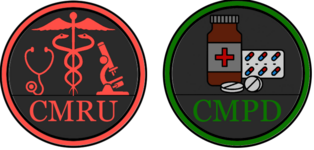- Joined
- Jun 23, 2020
- Messages
- 81
- Thread Author
- #1
<:: Logging in to "Civil Medical Union - Clinical Database"... Standby ::> <:: Please input credentials... ::> <:: Login credentials accepted, Welcome Back ::> <:: Accessing Records... ::> |
Welcome back, please select a category to continue: |
Preface: In my opinion, medical roleplay is such an interesting dynamic of HL2RP that's often not utilized to its full potential. There are a few reasons for this, as outlined by the following guide, but the overarching theme seems to be that the area often seems niche until there's a trauma case to operate on. This guide will attempt to educate both non-medical and CMRU people to diversify Medical RP in order to make it enjoyable for both patient and CMRU characters. Common Medical RP concerns: "I don’t know much about medical RP" - This is both a barrier for patient RP as well as induction into the faction, whilst having some knowledge of the condition you're either presenting with or treating is recommended, this isn't real clinical practice and there isn't an expectation to know a great deal on either side. For CMRU workers, a lot of the RP education and learning happens whilst roleplay. "I don’t want my character to be PK’d or have debilitating injuries" - A totally valid point, players who engage in Medical RP may often feel they risk losing their character or will be forced into some disability for the rest of their characters' existence. This is not the case in most scenarios as due to being player-led roleplay, those on the brink of death often make a full recovery. However, freedom should be balanced with logic and those who undergo massive surgery should incorporate recovery into their RP somewhat. "Medical RP can take a long time, I don’t want to sit around for hours." - Engagement from both sides is important to consider, whilst in best practice we will attempt to include our patients in the roleplay, there is also the option to "Fade to black" if longer procedures, such as surgeries, take too long. Repetitiveness, Burnout and Lack of Variety: From my own experience, 90% of all roleplay interactions as CMRU tend to be wounds from stabbings, Xenian creatures and the occasional major surgery for a citizen lurking in the wrong side of the slums. Whilst this can provide some interesting moments, you can only patch up the same leg wound a few hundred times before it becomes monotonous, boring and routine. I believe this to be one of the deterrents for both patient and CMRU roleplay, and to fix this I propose this guide to inform all on the different conditions commonly seen in real life clinical practice, particularly in Emergency Medicine (from my own experience). This guide will cover the basics, but I recommend that you research signs and symptoms of these before you engage in RP. So, without further rambling, here are the most common conditions in practice, an explanation of what they are, and their treatments. | ||||||
|
Overview: Healthcare, Divisions & Roles Healthcare is considered to be more than the simple diagnosis and treatment of disease, moreover, it is an umbrella term which considers the diagnosis, treatment, education and prevention of ill health. Broadly speaking, there are four divisions within healthcare (excluding non-clinical sectors, such as administration and support) these are; Medical, Surgical, Healthcare Sciences & Therapy. Each sector works interchangeably to provide clinical care across the lifespan, here I will very briefly discuss these areas, their function, and the roles that encompass them.
|
|
|
Coming Soon...
|
For Xenian-Based procedures, please Click Here |
|
|
If you would like to know more about pharmacology, please refer to this document:
Pharmacology - Complete Guide“Medicine is not only a science; it is also an art. It does not consist of compounding pills and plasters; it deals with the very processes of life, which must be understood before they may be guided.” - Paracelsus Pharmacology, What is it? Pharmacology, in lay terms, in the study of med...
|
Disclaimer - This is an archive for clinical practice, for specific Civil Medical Union legislation, please access the following document:
Click Here for Handbook
Click Here for Handbook
Credit: |
@Lost Coast Chanties - Format (Heavily inspired by The Digital Library Archive) The many websites, text books, lectures and teaching that went into this |
Last edited:


